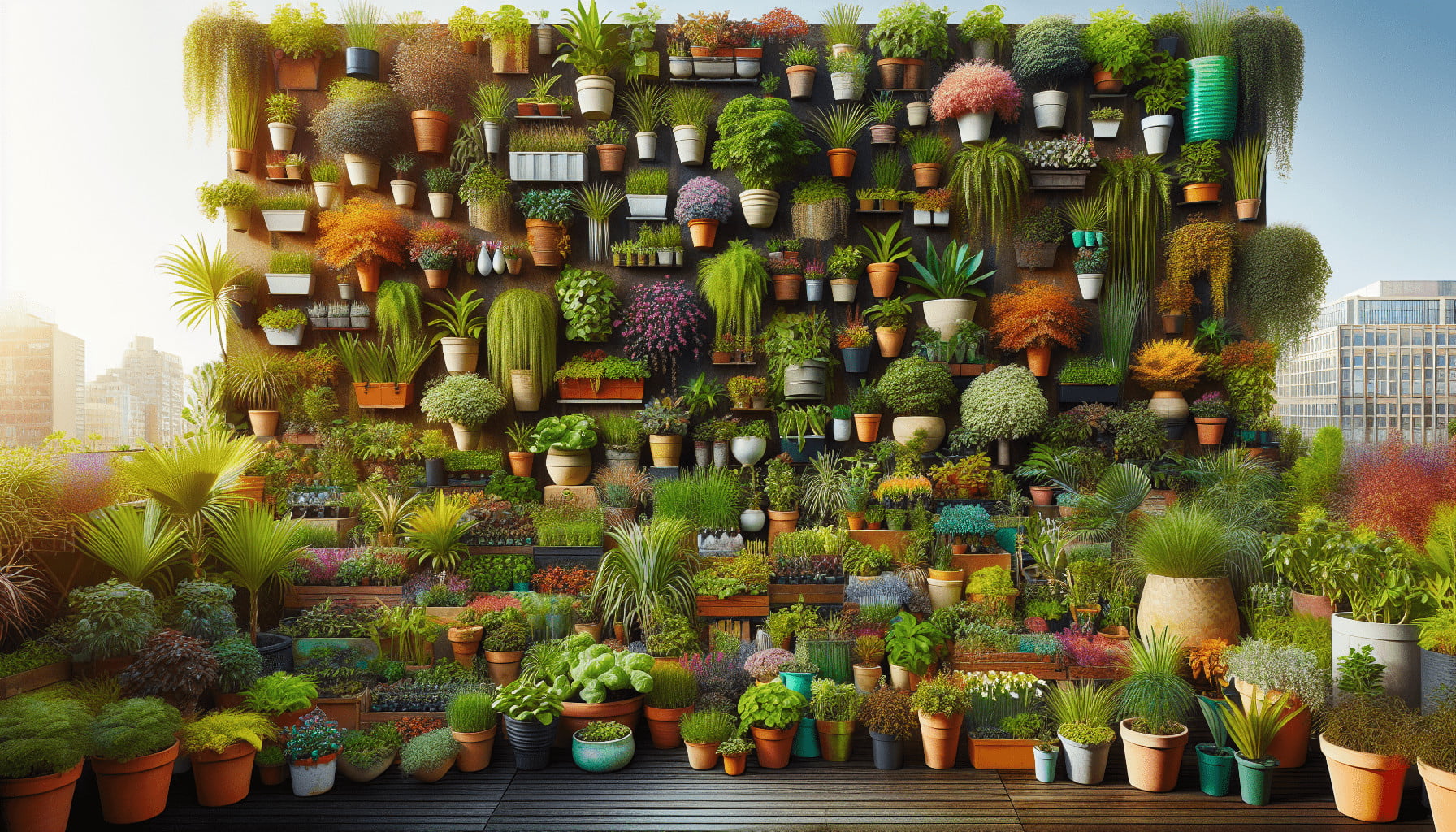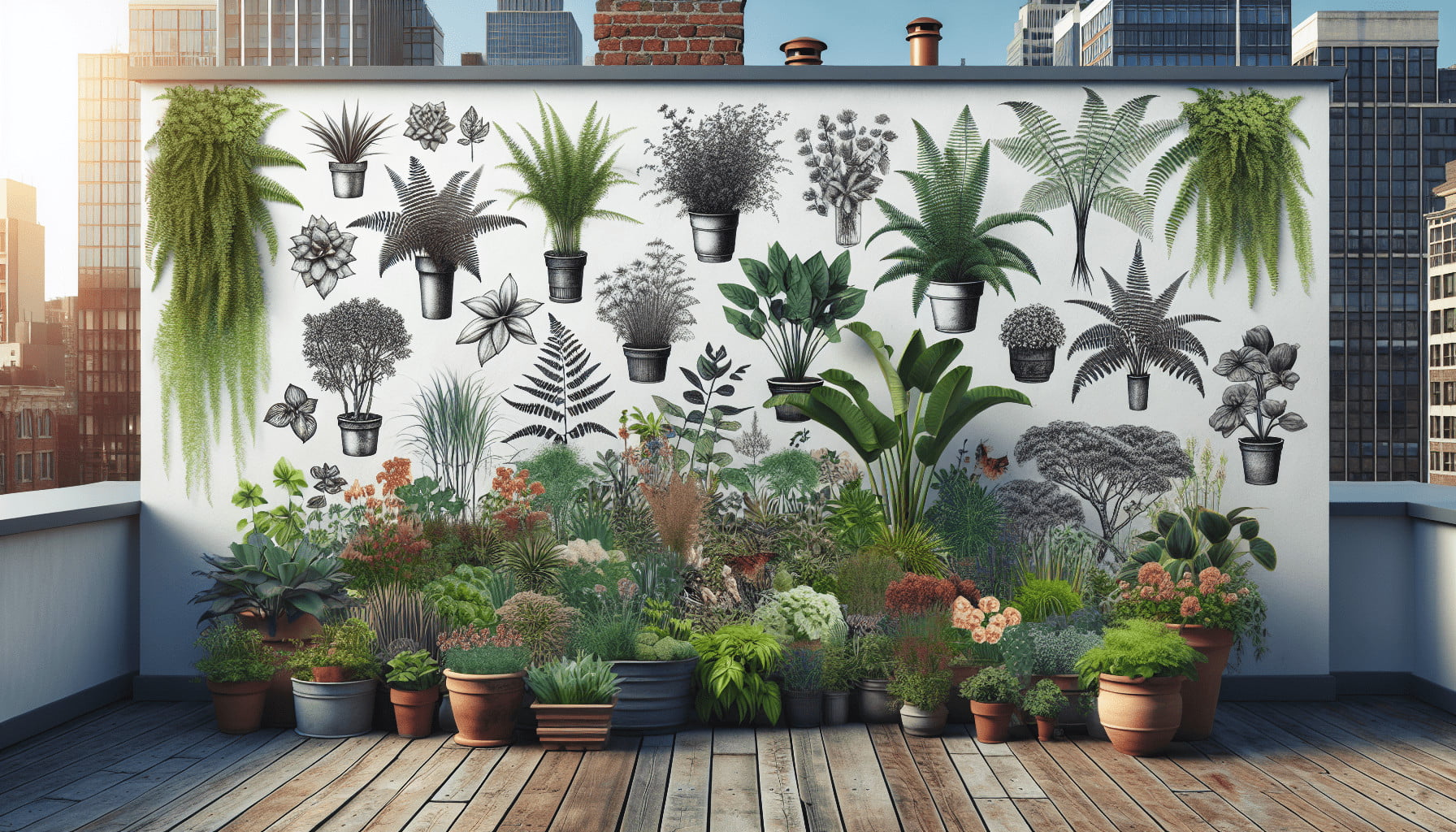Choosing the right plant varieties for your rooftop garden can be a delightful yet challenging task. You’ll need to consider factors such as sunlight exposure, wind tolerance, container size, and plant hardiness. It’s essential to select plants that thrive in the specific conditions of your rooftop, ensuring they receive enough sunlight, withstand gusty winds, and fit well in your chosen containers. By carefully weighing these factors, you can create a vibrant, thriving green space that not only beautifies your rooftop but also offers a refreshing retreat.
Having a rooftop garden can be a delightful way to beautify your living space, provide a green escape in urban settings, and help the environment all at once. However, choosing the right plant varieties for your rooftop garden involves several important considerations to ensure that your garden thrives. Let’s dive into these important factors together, so you can create a rooftop garden that you’ll love.

1. Climate and Weather Conditions
Understanding the climate and weather conditions of your area is paramount when selecting plants for your rooftop garden. This includes the average temperatures, sunlight exposure, wind patterns, and the amount of rainfall. Different plants have varying climate needs, and it’s important to match these with your local conditions.
Sunlight Exposure
Most plants require sunlight to grow, but the amount of sunlight needed can differ greatly between species. Determine whether your rooftop is shaded, partially shaded, or enjoys full sun throughout the day.
| Sunlight Condition | Plant Examples |
|---|---|
| Full Sun (6-8 hrs/day) | Tomatoes, Lavender, Basil |
| Partial Sun (4-6 hrs/day) | Ferns, Hostas, Bleeding Heart |
| Shade (1-3 hrs/day) | Ivy, Coral Bells, Astilbe |
Wind Exposure
Rooftops can be particularly exposed to winds, which can dehydrate and damage plants. Consider building windbreaks or choosing plants that are hardy and wind-resistant.
Temperature
Select plants that can withstand the temperature extremes of your region. For instance, succulents and cacti can thrive in hotter areas, while certain perennials may be better suited for cooler climates.
2. Weight and Structural Support
The structural integrity of your rooftop is crucial to ensuring that it can support the weight of your garden. Plants, soil, containers, and additional garden accessories add significant weight.
Load-Bearing Capacity
Consult a structural engineer to determine the load-bearing capacity of your rooftop. Once you know how much weight your roof can support, you can plan accordingly.
Lightweight Alternatives
Opt for lightweight soil mixtures and materials. For example, soilless potting mixes are typically lighter than traditional garden soil. Use lightweight containers such as plastic or composite pots.
3. Soil and Growing Medium
Choosing the right soil or growing medium is essential for plant health. Rooftop gardens often use special lightweight growing media to reduce the load on the structure.
Lightweight Soil Mixes
Use specially formulated rooftop garden soils that are lighter than traditional soil, yet provide adequate drainage and nutrients.
Soil Amendment
Enhance your soil with compost and other organic matter to ensure that it is nutrient-rich and conducive to plant growth.
4. Watering Systems and Drainage
Proper watering and drainage are fundamental to the sustainability of your rooftop garden. Using efficient watering systems can make maintenance easier and support plant health.
Irrigation Options
Consider installing an automated drip irrigation system to provide consistent moisture to your plants while conserving water.
Drainage Solutions
Effective drainage ensures that water doesn’t accumulate on your rooftop, which can be detrimental to plants and your roof structure. Use raised beds with built-in drainage or containers with drainage holes.

5. Plant Selection Based on Usage
Think about how you plan to use your rooftop garden. Are you looking for a relaxing oasis, a functional vegetable garden, or a space for entertaining?
Ornamental Plants
If aesthetics are a priority, choose a variety of colorful flowers, shrubs, and ornamental grasses to create a visually appealing garden.
Edible Plants
For a functional garden, consider growing vegetables, herbs, and fruit-bearing plants. Make sure to choose varieties that can thrive in container environments.
Mixed Use
A combination of both ornamental and edible plants can offer the best of both worlds. Create zones within your garden for different plant types and uses.
6. Maintenance and Care Requirements
Consider your ability to maintain your rooftop garden. Some plants require more care than others, and choosing plants that match your gardening skill level will lead to a more enjoyable experience.
Low-Maintenance Plants
For less hands-on gardening, consider succulents, drought-resistant plants, and perennials that require minimal care.
High-Maintenance Plants
If you have the time and interest, you can opt for more demanding plants like roses, certain types of vegetables, and seasonal flowers.
Seasonal Changes
Choose a mix of perennial and annual plants to ensure that your garden has year-round interest. Plan for seasonal changes and how they will impact your garden’s appearance and plant needs.
7. Pollinators and Wildlife
Encouraging pollinators and beneficial wildlife can enhance your garden’s health and biodiversity.
Attracting Pollinators
Selecting plants that attract bees, butterflies, and other pollinators can help with plant reproduction and increase garden productivity.
| Plant Type | Pollinator Attracted |
|---|---|
| Lavender, Sunflowers | Bees |
| Butterfly Bush, Milkweed | Butterflies |
| Sage, Mint | Hummingbirds |
Providing Habitat
Include plants and garden features that offer habitat and food for beneficial insects and birds. This can create a balanced ecosystem right on your rooftop.
8. Aesthetic Considerations
The visual appeal of your rooftop garden is a significant factor. Consider how different plants will look together and how they’ll complement your living space.
Color Scheme
Choose plants that offer a cohesive color scheme or create interesting contrasts. The right mix of colors can make your garden more inviting.
Plant Heights and Textures
Varying plant heights and textures can add depth and interest to your garden design. Mix tall plants with ground covers and include plants with different leaf shapes and sizes.
Garden Layout
Plan the layout of your garden to ensure it’s both functional and beautiful. Think about the arrangement of plants, pathways, and seating areas.
9. Legal and Safety Considerations
Before starting your rooftop garden, be aware of any legal and safety regulations that may apply.
Building Codes
Check local building codes and regulations to ensure your rooftop garden complies with legal requirements.
Safety Measures
Implement safety measures to prevent accidents. This can include secure railings, proper access points, and safe handling of garden tools.
10. Cost and Budget
Understanding the costs associated with creating and maintaining a rooftop garden will help you plan and budget effectively.
Initial Setup Costs
Consider the initial costs of building materials, plants, containers, and irrigation systems.
Maintenance Costs
Budget for ongoing costs such as water, fertilizers, plant replacements, and any potential repairs or upgrades to your garden structure.
Conclusion
Creating a rooftop garden is an exciting project that can transform an unused space into a thriving green sanctuary. By considering factors such as climate, structural support, soil, watering systems, plant selection, maintenance, pollinators, aesthetics, legalities, and budget, you can ensure the success of your garden. With thoughtful planning and the right plant varieties, your rooftop garden can become a personal paradise that offers relaxation, beauty, and practical benefits year-round. Happy gardening!
